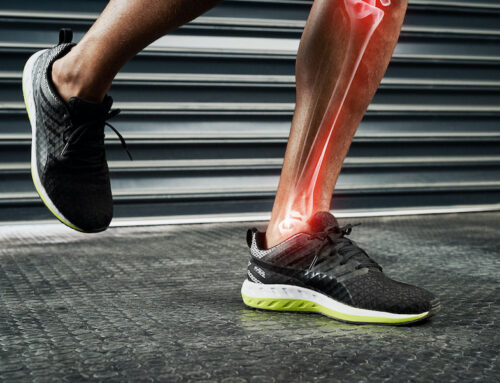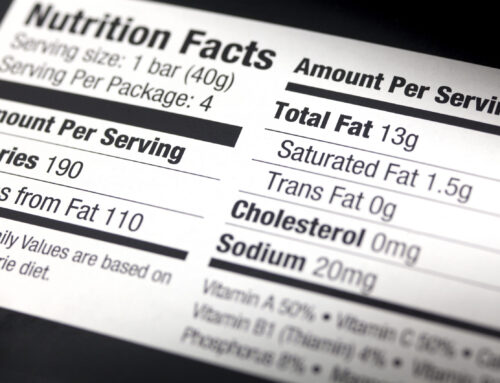It still seems to us that educating people on things they could eat to help get in shape is as much about bringing different food items to their attention, as it is un educating them about all of their own habits, hacks and information they’ve accumulated over the years. It’s made more difficult by big companies beginning with W and S falsely promising the W to a lot of people when it comes to losing weight.
As ever you can skim over things with a thin layer or you can delve deep into the belly of a subject when trying to help others understand the points you’re making.
The biggest problem in our eyes is that when people decide to become more healthy, and more active the first thing they do is ‘go on a diet’. Whilst we identify this as a problem (more on this) it does actually show the individual has some loose understanding of what they shouldn’t eat. If they thought what they were eating was fine, why would they change it and go on a diet in the first place?
So why is going on a diet a problem?
Our biggest gripe with this is that an off the shelf diet rarely meets the nutritional demands of an individual person. The bigger ones I mentioned above follow a low fat methodology which isn’t ideal, you’ve things like ‘paleo’ diets where only animal or plant sources can be consumed, you’ve got ketosis diets, you’ve got low carb revolutions going off, there’s even shake diets if that’s your thing. The huge problem is big organisations will gear you up for their mentality, their way of thinking and then feed you only relevant information about the way they do things and that it’s of more benefit to you than anything else out there. Most diet companies have a points system to help with portion control. This in its self helps to form a calorie restricted diet, but how do you know you’re restricting the right calories? Free foods often found in diets still have a calorie value and it still counts towards your daily calorie intake, of which is determined by your activity level and lifestyle, based on your age, gender and current body mass. With this in mind, it’s now easy to understand what I said about an off the shelf approach you get with most providers. It’s also easy to understand why a ‘diet’ plan for a 30 year old postman who walks a lot at work, and cycles for leisure NEEDS more calories than a 30 year old office worker who drives to work and has little activity in life. Also, most ‘diets’ people find themselves on will require some form of cutting. This will either be carbohydrates or fats, because as a western society our diets are rich with these two macronutrients. They rarely suggest increasing ones protein intake and removing calories from fats and carbohydrates will have a negative impact on an already (probably) low protein intake.
Diet providers make a big sell on what makes and what breaks your weekly menu and often without informing you why it is or isn’t featured on their plates.
Protein, carbohydrates, and fats are three macronutrients (referred to as food groups) in everyone’s diet. It doesn’t matter whether you follow a shake diet, one of the bigger groups or some swanky fad way, macronutrients (macros) are the most important thing.
Before we decide which we should favour over another it’s important to understand the role of each.
Loosely speaking (going in depth on this would be a whole other article in itself);
Carbohydrates; Carbohydrates contain 4 kilocalories per gram of raw weight. The role of carbohydrates is to fuel the body for activity. Activity means, anything beyond its resting state.
Fat; Fats contain 9 kilocalories per gram of raw weight. Fats can help provide some energy, but their role is to help sustain a healthy and strong immune system. Fats also assist with how our nervous system works. IMPORTANT – essential vitamins and minerals are fat soluble. This means they need dietary fats in sufficient amounts to break them down.
Protein; Protein contains 4 kilocalories per gram of raw weight. Protein is responsible for sustaining your body’s lean mass, and stimulating protein synthesis which is the redevelopment of new muscle tissue. Muscle gives shape to our skeleton. Protein is also a key contributor to body recovery.
Even in reading my own brief summary of what macros are and what they do, my question is ‘should I be cutting out any of it?’
Is it wise to go low fat? What happens with a low carb diet? All valid questions.
You might be someone who has in the past gone ‘low fat’. This can be mentally tough. The taste isn’t there which doesn’t leave you feeling fulfilled with some meals, low fat means higher sugar (and that’s generally bad in itself). Your body won’t get sufficient dietary fat to break down the vitamins and minerals in your food and your endocrine system will eventually fail because it isn’t being sufficiently nourished. Similarly a low carb diet can be just as bad, or at least leave you feeling that way! Carbs are energy, in short. Low or no carbs means low or no energy. No energy to get up with, no energy to be active with, no energy to go to work with. This can be a bad place to be. When your body is in this state of fatigue (and it will eventually come if you over train and under eat) you will make poor choices when it comes to nutrition and lifestyle. As I mentioned above cutting either one or both can have huge negative implications for your protein intake.
The issue with cutting too much is that the more you cut, the more your nervous system will allow you to dig into your stored reserves which as we know, don’t last for ever. Repeating this cycle day in day out, for weeks and months is dangerous and can lead to a complete breakdown. Most people I know, family, friend or client don’t stick to a ‘diet’ for long. This is largely because the changes can be too much to get your head around in one go. They can be strict and restrictive on good food. By good, I mean things your body needs, not things your palate likes and enjoys. Believe it or not, you’re really good at forming habits, this is how you’ve come to the sticking point you’re at. Taking on a healthy and active lifestyle is just a matter of changing your nutritional habits and your exercise activity levels, and making them your new habits. Recalibrating the way you operate isn’t an easy task, especially if you do it all (or try to) in one go. The most simple way of doing this is by kicking a bit of the badness out of your current diet, and bringing in a little more activity. By this, I mean a bit, and a little more, not starve yourself and train like Paula Newby-Fraser when she wanted to win an IRONMAN race outright.
Just slipping the poor food from your diet, and being generally more active will start with creating a calorie deficit. Once you become accustomed to this, push something else aside and accommodate a little more activity, or something more structured. This will start a new system, and for training, system is good. Also little and often goals and habits will help you keep more accountable, however, don’t feel the need to punish yourself if you have a wobble and a bad day. This happens more often than you’d think, it’s perfectly normal. Simply put it behind you and start with the good stuff again.
I know we’ve covered this before but the smallest of losses week in, week out just from cutting things out the right way can lead to the biggest impact and the longest lasting results. That 1lb on week one might seem pretty feeble against your WW and SW peers, but 12 weeks of it you’ll be best part of a stone lighter, much healthier, more active and more resilient. You’ll have a better understanding of what your body requires, as opposed to what your palate wants. You’ll be reinforced with good healthy habits.
In summary the message is simple. Cut out cutting out. Your body needs carbohydrates, fats and protein in varying amounts from person to person.
You’re already on a diet before you ‘go on a diet’. Your diet is everything you consume. It doesn’t have to be of a label. A good diet should uphold your nutritional requirements, not condition you mentally into developing a poor relationship with food. Macros are the most important element, and the ratio you consume. This is the box, lock and key for you and your results.






 >
>

Leave a Reply